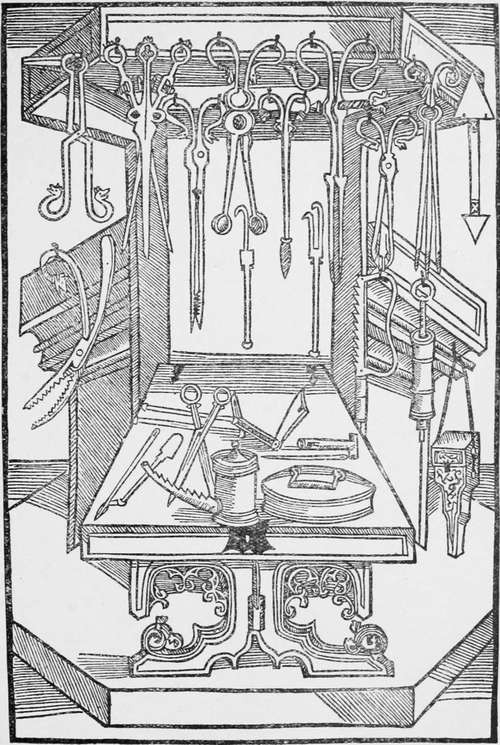Surgeons Outside Of Italy. Surgeons Of The West Of Europe. Part 6
Description
This section is from the book "Medieval Medicine", by James J. Walsh. Also available from Amazon: Medieval Medicine..
Surgeons Outside Of Italy. Surgeons Of The West Of Europe. Part 6
There is not much to be said of the surgery of Germany during the Middle Ages, though toward the end of this period a series of important documents for the history of surgery were written which serve to show how much was being accomplished, though the subsequent religious and political disturbances in Germany doubtless led to the destruction of many other documents that would have supplied valuable information. Heinrich von Pfolspeundt's book, which is a work on bandaging —" Bundth-Ertzney "—was published in 1460, and the experience for it was therefore all obtained in the Middle Ages. While its main purpose is bandaging, it contains many hints of the surgical knowledge of the time. There are chapters devoted to injuries and wounds, though it is distinctly stated that the book is for " wound physicians " (Wund Aertzte) and not for cutting physicians (Schneide Aertzte) — that is, for those who do operations apart from wounds. There are two operations described, however, that have particular interest. One of them involves the plastic surgery of the nose, and the other the repair of a hare-lip.
Pfolspejindt suggested that stitches should be placed on the mucous surface as well as on the skin surface, after the edges of the cleft in hare-lip had been freshened in order to be brought closely together for healing with as little deformity as possible. Perhaps his most interesting surgical hint for us is a description of a silver tube with flanges to be inserted in the intestines whenever there were large wounds, or when the intestines had been divided. The ends of the gut were brought together carefully over the tube and stitched together, the tube being allowed to remain in situ. Pfolspeundt says that he had often seen these tubes used and the patient live for many years afterwards. While this resembles some of the mechanical aids to surgery of the intestines that have been suggested in our time, this was not the first mechanical device of this kind that had been thought of. One of the later medieval surgeons in Italy, one of the Brancas, had employed the trachea of an animal as the tube over which the wounded intestines were brought together. This had the advantage of not having to be passed, for after a time it became disintegrated in the secretions, but it remained intact until after thorough agglutination of the intestines had occurred.

Brunschwig's Surgicat, Armamentar1um Front Gurlfs "Geschichte Der Chirurgie".
Hans von Gerssdorff and Hieronymus Bruns-chwig, who flourished in the latter half of the fifteenth century in Germany, have both left early printed treatises on Surgery which give excellent woodcuts showing pictures of instruments, operations, and costumes, at the end of the medieval period.
Continue to:
- prev: Surgeons Outside Of Italy. Surgeons Of The West Of Europe. Part 5
- Table of Contents
- next: Chapter VIII. Oral Surgery And The Minor Surgical Specialities
